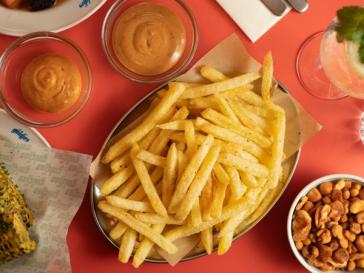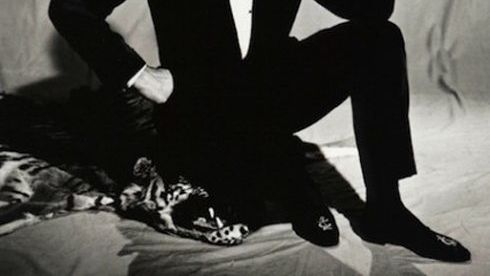

The best gentlemen’s clubs in the world
Words: Rose Macdonald-Buchanan
Gentlemen’s clubs stir controversy in this modern era. Often founded in the 19th century, they are deemed archaic by some, sexist by others, and a grand pass into an exclusive world by the rest. Gentlemen exist in an exclusive world, so you can indulge yourselves in a refined and established environment. Many have demanded that this ‘men only’ attitude changes. but many argue that doing so would cause more issues. So, whilst they exist, you may as well enjoy all that they have to offer in every sense.
White’s, St. James’s
White’s is a gentleman’s club on St James’s Street, London. It’s the oldest and most exclusive gentleman’s club in London. It gained a reputation in the 18th century for both its exclusivity and the often raffish behaviour of its members. Notable current members include the Prince of Wales, Prince William, Duke of Cambridge and Tom Stacey. British Prime Minister David Cameron was formerly a member for fifteen years but resigned in 2008 over the club’s refusal to admit women, despite his father Ian Cameron having previously been the club’s chairman. White’s continues to be a men-only establishment; the only exception being made during a visit by Queen Elizabeth II in 1991. Its beautiful exterior is matched by its traditionally refined interiors and the service is exceptional. Sophisticated and highly respected, this is suitable for a true gentleman, nothing less.
The Turf Club, The Mall
The Turf Club was founded in 1861 as the Arlington Club, with premises in Bennett Street, Piccadilly. It was while there that a committee of the Arlington, consisting of George Bentinck, Sir Rainald Knightley, Charles C. Greville and Colonel Pipon, under the chairmanship of John Clay MP, drew up the laws of whist, officially sanctioned by the Portland Club in 1864. Members had originally wished to call themselves simply The Club until it was discovered that they had been beaten to it: a hundred years or so earlier the name had been claimed by Dr Johnson and Sir Joshua Reynolds for their renowned dining society. The Turf Club moved in 1875 to the corner of Piccadilly. In 1965, the Turf Club moved to its current home at 5 Carlton House Terrace, overlooking the Mall. Carlton House Terrace itself was designed and built by John Nash, the famous Regency architect, between 1827 and 1833. The lease on Number 5 was held by the Earls of Caledon from 1830 until 1929, and its residents included Lord Palmerston; John Hay, and Harry Gordon Selfridge, founder of Selfridges.
Some quotations about this English aristocratic bastion include: “Probably the most exclusive club in London.” (1911) “A younger edition of White’s.” (1979)
In December 2008, it was reported by the Daily Mail that the Princes William and Harry had been given membership to the ‘patrician haunt’. In the same article it was written that the annual members’ fee was £1,000. It has always remained a patrician haunt of the aristocracy and its members have refined taste in wine, interests in sports such a racing, and a desire for fine food.
The Knickerbocker Club, New York
The Knickerbocker Club, informally known as “The Knick,” was founded in 1871 by several former members of the Union Club, who thought that group’s admission standards had fallen too low. The club now occupies a brick building on 62nd Street and 5th Avenue. The club at one point considered rejoining with the Union Club, but that plan never took shape. The club has reciprocal arrangements with many clubs all over the world, such as The Turf Club and The Jockey Club of Paris. Terribly sophisticated and difficult to join, this club is part of a lively scene, in the lights of The Big Apple. The highly exclusive group is still men-only today.
Pratt’s
Pratt’s is a gentlemen’s club in London. It was established in 1857, with premises in a multi-storey town house in Park Place, off St James’ Street, and close to the Ritz London. The club takes its name from William Nathaniel Pratt, who lived there from 1841. Pratt was steward to the Duke of Beaufort, who called at the house with his friends one evening, and enjoyed themselves so much that they returned time and again. After Pratt’s death in 1860, the club was continued by his widow, Sophia, and son, Edwin. The premises were later acquired by the 11th Duke of Devonshire. It has around 600 members, but only 14 can dine at one time at the single table in the basement dining room. The club has two rooms—a dining room, and a sitting room/smoking room. Also housed in the premises is a billiard room (which is primarily used for guests to hang their coats on the chairs), a larger dining room used for lunches or private parties, a small suite that members may use if booked well in advance and the steward’s quarters above all that. Tiny in size, compared with most, this is not only exclusive but equally unique.
As the building is heritage-listed (certain parts of it date back to the 16th century) there is no air conditioning, nor is there an elevator. There are roughly 100 stairs from the basement club to the steward’s quarters. To avoid confusion, all male staff members are referred to as ‘George’. This caused a dilemma when the first (and so far, only) female steward was hired in the 1980s. The problem was solved when it was decided that she would be called ‘Georgina’. Notable members have included Harold Macmillan, Randolph Churchill, Duncan Sandys and the cartoonist Osbert Lancaster, who featured the armchair and stuffed fish in the members lounge in many of his cartoons.
Swinley Forest Gold Club
A charming golf course in the famous Surrey/Berkshire sand belt, it is a club that has frozen in time, with its exclusivity and eccentricity. Unconventional, there is no captain and despite existing for over 100 years, no history, except in its members’ heads. Only recently have scorecards been printed, holes allocated par figures and competitions introduced for its distinguished gents. One of Swinley’s delights is that is very unpretentious and the ambience is fantastic. It has none of the glamour that its neighbours possess, such as Sunningdale and Wentworth, but it does have bags of style.
If you have the privilege of playing here, you will no doubt have the course to yourself, and if that is not the case you will be able to count the rest on one hand. Swinley is truly beautiful; its location and green sets put it far apart from other courses but the par of 68 makes it a tough challenge.


